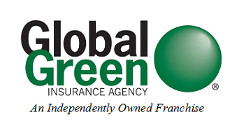The Underwriting Solution
Given the current crisis, insurers have no choice but to eventually restrict coverage. Several policy wording changes are on the horizon:
Increased deductibles. Percentage and per building deductibles are becoming the norm. Unfortunately, the effect of this change is easily overcome by a contractor’s promise to waive the building owner’s deductible. The contractor or public adjuster knows that by inflating the estimate he can recover enough on the claim to hire a subcontractor to actually perform the work, absorb the deductible, and still make a healthy profit.
ACV only coverage. Most of the disputed claims involve old roofs which have suffered from years of deterioration, lack of maintenance, and quite often non-damaging impact from numerous hail events. By providing actual cash value coverage for roofs older than 10 or 15 years, the building owner is forced to shoulder a significant portion of the roof replacement cost. If the roof is not leaking, the building owner will typically defer that capital cost. Only when a “free roof” has been promised will it be motivated to pursue the insurance claim.
Endorsements limiting coverage. Given that most disputes involve the issue of what constitutes physical loss or damage, one solution is to provide an actual definition for damage to roofing systems, roof top accessories, and roof top equipment. One possible definition would be: “For purposes of covered property that is the subject of this endorsement, we define “physical loss or damage” as a reduction in the roof’s water shedding capacity or life expectancy.” More specifically, language can be provided for a particular roof type, such as metal: “For purposes of this endorsement and the definition of physical loss or damage set forth above, dents, dings, and dimples to metal roofing systems and metal roof top accessories do not constitute physical loss or damage.” Or, quite simply: “We do not provide coverage for dents, dings, and dimples to metal roofing systems and metal roof top accessories.” Similar specific provisions can be used for other types of roofing systems and HVAC equipment.
Choice of law/venue endorsement. Some states have laws more favorable to insurers than others. For example, Texas law provides that disputes as to the existence or scope of damage are subject to appraisal. New York law does not. Texas law does not recognize suit limitation provisions less than two years and a day. New York law allows such provisions if they are reasonable under the circumstances. Some insurers are including mandatory New York choice of law and choice of venue provisions to avoid the inequities of current Texas law.
Appraisal provision changes. Appraisal has become a non-judicial dispute resolution process entirely devoid of procedural rules or ethical guidelines. Manipulation and outright fraud is rampant in the process. Appraisal provisions are being rewritten to limit appraisal to situations where both parties agree to the process. Other changes include requiring the parties to jointly seek the appointment of an umpire (to avoid the race to the courthouse) and to allow the parties to execute an Appraisal Protocol identifying the issues to be appraised and procedures to be followed (to ensure an equitable appraisal process and clear award).
Hail damage exclusions. Like high winds in hurricane prone areas, unless this problem is solved, the inevitable result will be the complete exclusion of all physical loss or damage resulting from hail events.
In addition to these policy wording changes, another underwriting solution is to document the condition of a roof on or near the date of policy inception. This can be done with pictures and video. No report or opinions are necessary. A simple “snapshot” showing the condition of the roof as it existed on the date the insurer commenced coverage on the risk. This would allow the insurer to compare the reported damage to what was present on the date of inception. This would solve the common problem of claims being submitted for alleged “hail impact damage” that has been present for years but was of no concern to the building owner until a roofing contractor knocked on its door and advised that a free roof was in its future.
Read the full article here: http://www.claimsjournal.com/news/national/2014/05/02/248354.htm

